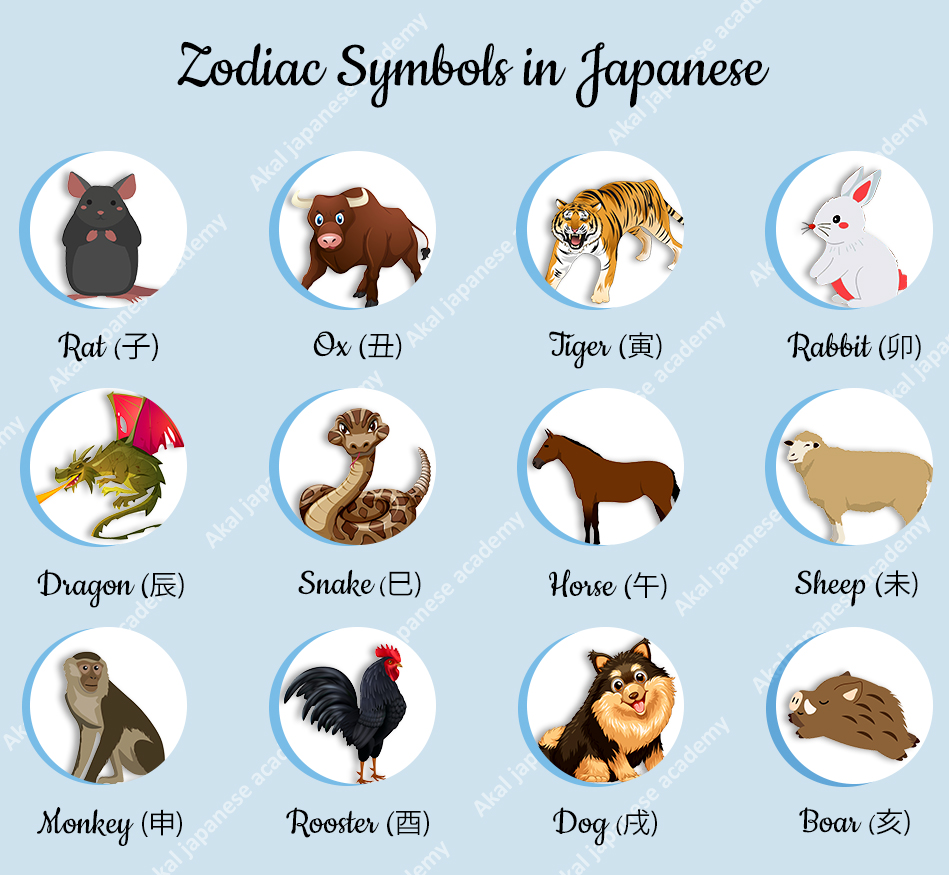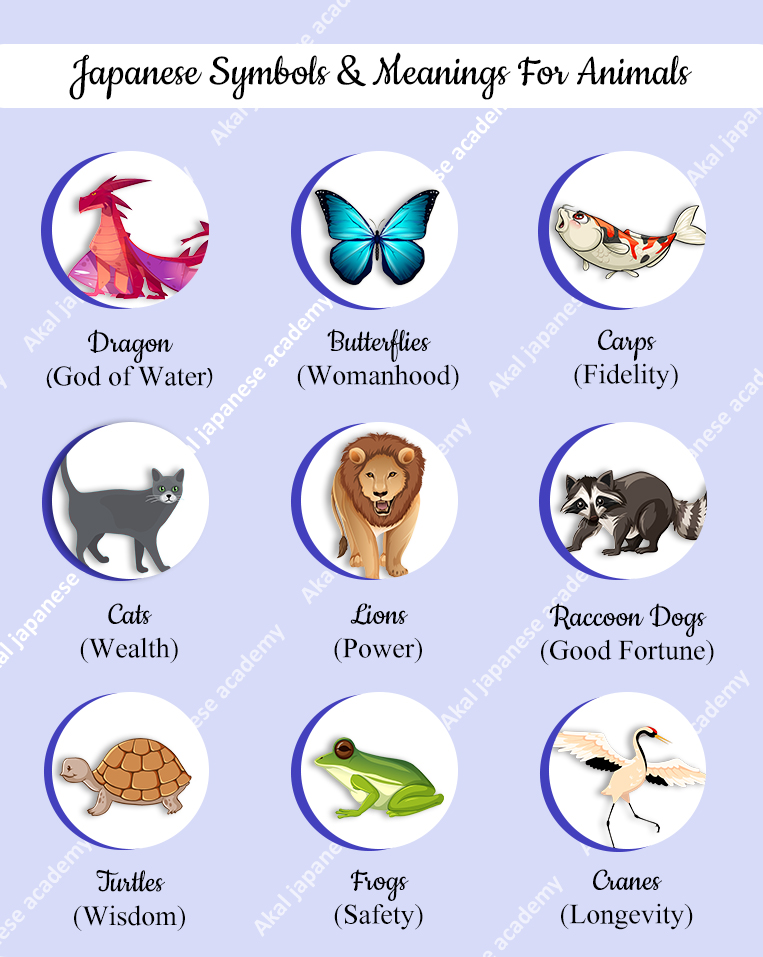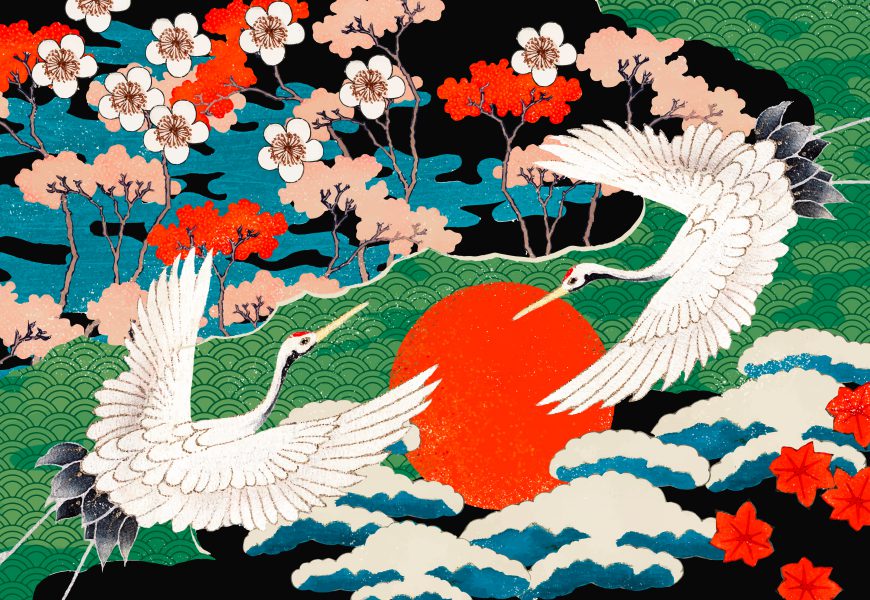Welcome back to AKAL Japanese Academy’s blog on Japanese words and vocabulary. Our previous blogs covered how to say different fruits, days, months, and dates, goodbyes, and many others in Japanese. In this blog, we will teach you how to say animal names in Japanese.
First of all, it is important to know that while some Japanese animal names are written in hiragana, most of them are written in katakana.
Animals have significant symbolism for the Japanese so before we jump right into animal names in Japanese, let’s look at what various animals symbolize in Japan.
Japanese Symbols And Meanings For Animals
In the Japanese Zodiac, there are 12 animals, which were all imported from ancient China. These 12 Japanese animal symbols – rat, ox, tiger, rabbit, dragon, snake, horse, goat, monkey, rooster, dog, and boar – still hold essential meanings to this day.

As evidenced by the many Japanese legends and idioms, monkeys are an important part of Japanese heritage and culture. In fact, the Japanese macaque, also known as the snow monkey, is Japan’s national animal.
Different animals have different symbolizes in many countries, not just in Japan. Below you will find the symbolism of some of the animals in Japan.

- Dragons: Though mythical, dragons are among the most powerful symbols in Japan and were worshipped as the gods of water. They were believed to control the change of seasons. As legend has it, when dragons go up from the seas to the skies or heavens, spring comes, and summer comes when they make their homes in the heavens. Fall and winter come when they return to the waters.
- Butterflies: The Japanese believe that when people pass, they take the form of a butterfly to journey to the other side. Butterflies also symbolize womanhood as they believe that girls find their wings to fly and emerge into a woman.
- Carps: Carps have the strength to swim upstream. So, their perseverance symbolizes the Children’s Day Festival on 5 May of each year in Japan to inspire children to work hard to be successful. Carps also symbolize fidelity and marriage.
- Cats: Cats represent joy, fortune, and wealth, and they are believed to bring luck.
Lions: Some Japanese places of worship have statues of two lions – known as ‘lion dogs’- guarding the entrances to keep evil away. Lions have also long been the symbol of power and strength. - Raccoon Dogs: Known as Tanuki in Japanese, raccoon dogs are popular in Japanese modern and traditional art. They are known to be playful and cheerful animals who bring good fortune.
- Turtles: Turtles, especially sea turtles, can live up to 150 years or more. The Japanese have used their long lifespan to symbolize longevity, luckiness, and wisdom.
- Frogs: In Japanese, ‘frog’ means ‘return’. So, travelers often carry frogs to be able to return home safely. They are considered to be lucky creatures who bring good fortune.
- Cranes: Among the Japanese folklore animals, cranes are believed to live up to 1,000 years. So, they represent longevity and good luck. As cranes are monogamous, they are widely used in Japanese weddings and New Year celebrations.
Names of Animals In Japanese
Take a look at the list of animal names in Japan below and memorize them to expand your Japanese vocabulary skills.
- Animal in Japanese: Dou butsu (どうぶつ)
- Macaque in Japanese: Makaku (マカク)
- Dog in Japanese: Inu (いぬ)
- Fish in Japanese: Sakana (さかな)
- Wild Duck in Japanese: Kamo (カモ)
- Domestic Duck in Japanese: Ahiru (アヒル)
- Lion in Japanese: Shishi (しし)
- Insect in Japanese: Mushi (むし)
- Cat in Japanese: Neko (ねこ)
- Tiger in Japanese: Tora (トラ)
- Crane in Japanese: Tsuru (ツル)
- Shark in Japanese: Same (サメ)
- Whale in Japanese: Kujira (クジラ)
- Mouse/Rat in Japanese: Nezumi (ネズミ)
- Chicken in Japanese: Niwatori (ニワトリ)
- Bird in Japanese: Tori (とり)
- Swan in Japanese: Hakuchou (ハクチョウ)
- Puppy in Japanese: Ko inu (こいぬ)
- Monkey in Japanese: Saru (サル)
- Hare in Japanese: Usagi (ウサギ)
- Rabbit in Japanese: Usagi (ウサギ)
- Falcon/Hawk in Japanese: Taka (タカ)
- Squirrel in Japanese: Risu (リス)
- Horse in Japanese: Uma (ウマ)
- Zebra in Japanese: Shimauma (シマウマ)
- Sheep in Japanese: Hitsuji (ヒツジ)
- Goat in Japanese: Yagi (ヤギ)
- Panda in Japanese: Panda (パンダ)
- Pig in Japanese: Buta (ブタ)
- Kangaroo in Japanese: Kangaru- (カンガルー)
- Giraffe in Japanese: Kirin (キリン)
- Fox in Japanese: Kitsune (キツネ)
- Camel in Japanese: Rakuda (ラクダ)
- Wolf in Japanese: Ookami (オオカミ)
- Elephant in Japanese: Zou (ゾウ)
- Snake in Japanese: Hebi (ヘビ)
- Cuttlefish / Squid in Japanese: Ika (イカ)
- Abalone in Japanese: Awabi (アワビ)
- Shrimp in Japanese: Ebi (エビ)
- Octopus in Japanese: Tako (タコ)
- Crab in Japanese: Kani (カニ)
- Penguin in Japanese: Pengin (ペンギン)
- Dolphin in Japanese: Iruka (イルカ)
- Spider in Japanese: Kumo (クモ)
- Firefly in Japanese: Hotaru (ホタル)
- Fly in Japanese: Hae (ハエ)
- Cockroach in Japanese: Gokiburi (ゴキブリ)
- Centipede in Japanese: Mukade (ムカデ)
- Dragonfly in Japanese: Tonbo (トンボ)
- Butterfly in Japanese: Chouchou (チョウチョウ)
- Bee in Japanese: Hachi (ハチ)
- Caterpillar in Japanese: Kemushi (けむし)
- Lizard in Japanese: Tokage (トカゲ)
- Baboon in Japanese: Hihi (ヒヒ)
- Reindeer in Japanese: Tonakai (トナカイ)
- Dove / Pigeon in Japanese: Hato (ハト)
- Cow in Japanese: Ushi (ウシ)
- Eagle in Japanese: Washi (ワシ)
- Crow in Japanese: Karasu (カラス)
- Wild boar in Japanese: Inoshishi (イノシシ)
- Hippopotamus in Japanese: Kaba (カバ)
- Bat in Japanese: Koumori (コウモリ)
- Owl in Japanese: Fukurou (フクロウ)
- Goldfish in Japanese: Kingyo (きんぎょ)
- Pheasant in Japanese: Kiji (キジ)
- Ostrich in Japanese: Dachō (駝鳥)
- Emu in Japanese: emyū (エミュー)
- Peacock in Japanese: Kujaku (孔雀)
- Flamingo in Japanese: Furamingo (フラミンゴ)
- Jellyfish in Japanese: Kurage (クラゲ)
- Clownfish in Japanese: Kumanomi (クマノミ)
- Starfish in Japanese: Hitode (人手)
- Mackerel in Japanese: Saba (鯖)
- Stingray in Japanese: Akaei (アカエイ)
- Shellfish in Japanese: Kai (貝)
- Oyster in Japanese: Kaki (牡蠣)
- Pufferfish/Blowfish in Japanese: Fugu (フグ)
- SeaHorse in Japanese: Tatsu no otoshi go (タツノオトシゴ)
- Scallop in Japanese: Hotate (ホタテ)
- Carp in Japanese: Koi (鯉)
- Raccoon Dogs in Japanese: Tanuki (タヌキ)
There you have it, ladies and gentlemen: names of animals in the Japanese language. We hope this blog helps you in expanding your Japanese language skills.
If you want to learn Japanese in India, AKAL Japanese Academy in Delhi is the perfect Japanese language school. Here, our Japanese Language Classes focus on teaching our students the Language of Japan and everything they need to know about Japanese culture and traditions.
Moreover, if you want to Work in Japan or Study in Japan, we have covered you. Not only will we help you find your dream job or the best schools in Japan, but we will also assist you with your visa application process and help you make your transit to Japan much more effortless.
We will leave you here for now.
Until next time, sayonara for now!








